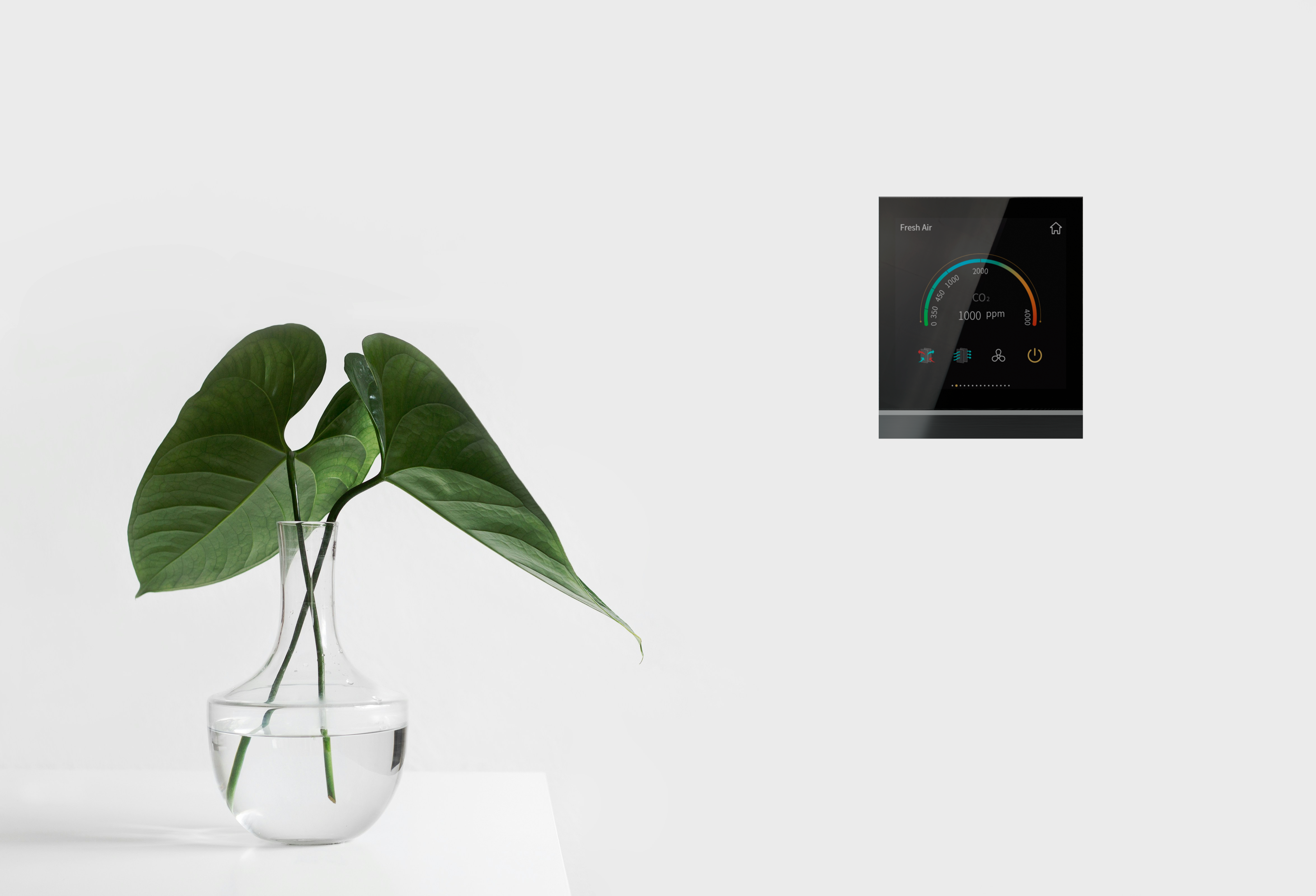Thanks to advanced insulation and construction standards, modern buildings offer better heat management, but often have a downside: reduced air circulation. Tightly sealed windows, roofs and walls help conserve energy, but can also lead to carbon dioxide (CO2) build-up and increased indoor humidity. Maintaining a controlled supply of fresh air is key, and this is where the KNX room temperature controller with a built-in CO2 sensor comes in.
Why is Indoor CO2 Control Important?
Carbon dioxide is a colorless gas with a faint odour so it’s nearly undetectable without specialized equipment. While outdoor air typically contains a CO2 concentration of around 400 ppm (parts per million), levels can rise significantly in enclosed spaces, especially those with high foot traffic like conference rooms, classrooms, and offices. Experts recommend maintaining indoor CO2 levels as close to outdoor CO2 concentration as possible and no more than 1,000 ppm to ensure the air remains fresh and comfortable. If CO2 levels exceed 1,000 ppm, the air can feel stuffy and uncomfortable, signaling a need for ventilation. When concentrations rise above 2,000 ppm, more serious interventions become necessary, such as increasing airflow through automated systems.
Role of the KNX Room Temperature Controller
An ideal KNX room temperature controller goes beyond just measuring the temperature. It can also monitor humidity, air pressure, and CO2 concentrations, creating a more comprehensive view of indoor air quality. This combination of features allows for precise adjustments to the indoor climate, whether through adjusting ventilation, heating, or air conditioning systems. The controller considers factors like air pressure, which can vary based on weather conditions or the building’s altitude. By taking air pressure into account, the system ensures more accurate CO2 measurements, leading to better management of air quality. This is especially important in high-altitude areas or places with fluctuating weather, where pressure changes can affect the behavior of indoor air.
Explore the excellent solution by Gira – KNX CO2 sensor with humidity and room temperature controller, as well as the elegant solution for displaying air quality – Ekinex Touch & Control.
KNX Climate Control
The KNX room temperature controller collects data on temperature, humidity, CO2 levels, and air pressure, transmitting it to a centralized KNX bus system. This system can visualize the data and use it to adjust the heating and ventilation systems based on pre-set upper and lower thresholds for each parameter. For instance, if CO2 levels rise above a certain point, the system can automatically trigger ventilators or open windows to bring in fresh air. This level of automation means that users don’t have to worry about manually adjusting the settings. The continuous monitoring and adjustment of air quality ensure that spaces like shopping centers, schools, hospitals, and other high-traffic areas maintain a healthy indoor environment.
The Impact of Indoor Air Quality on Health
It’s easy to overlook how much time we spend indoors, but statistics reveal that, on average, Europeans spend 90% of time inside – at home, at work, or in vehicles like cars and buses. Indoor air quality has a significant impact on our well-being, often even more so than outdoor air. While outdoor pollution is a common concern, indoor air that’s poorly managed can harbor pollutants and high CO2 levels, which can lead to discomfort and potentially harm health. This is why maintaining good air quality in enclosed spaces is essential. A KNX room temperature controller equipped with a CO2 sensor can play an important role in ensuring the air remains clean and safe, creating a healthier living and working environment.
Breathing Easy with KNX
Modern buildings are facing the challenge of maintaining energy efficiency while ensuring good air quality. The KNX room temperature controller with CO2 sensor provides an efficient solution, automatically managing the indoor climate to keep the space fresh and comfortable. With proper planning and installation, this system can significantly improve occupant well-being while maximizing energy savings.


